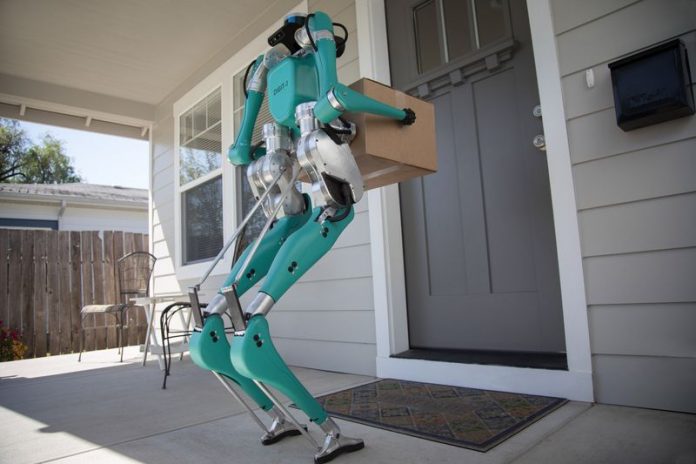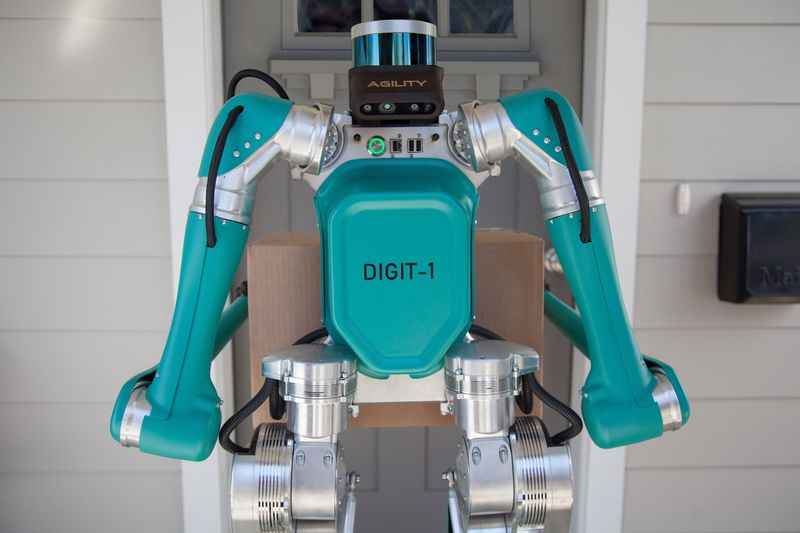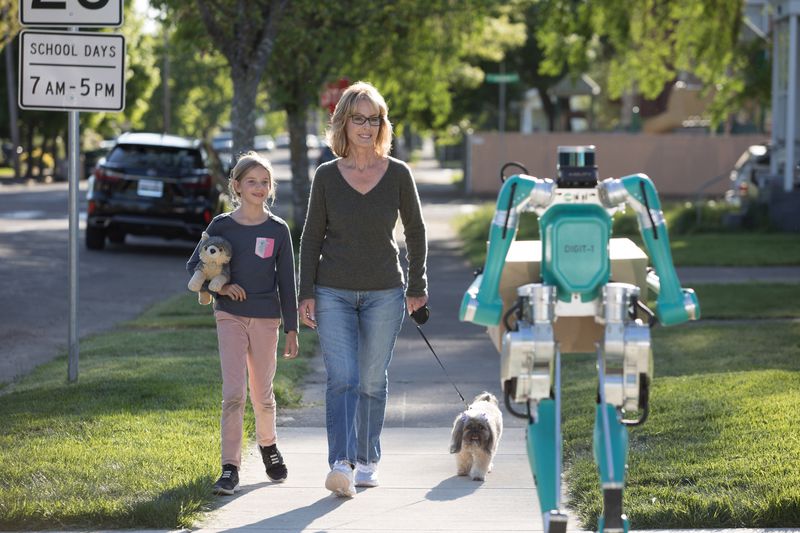
American automaker Ford has unveiled “Digit“, a two-legged, almost human-like robot capable of making home deliveries. Designed in collaboration with Agility Robotics, Digit can walk, go up and down stairs, and carry packages of up to 40 pounds (just over 18kg), like a human.
The robot can, for example, collect parcels from a driverless autonomous vehicle and deliver them to the homes of end clients. The robot is also designed to fold up tightly for easy storage and transportation onboard a self-driving vehicle until it is needed again.
The aim is to make car and robot communicate, so that the car could, for example, share delivery details and mapped pathways with the robot.
Digit is equipped with cameras and a LiDAR (Light Detection and Ranging) sensor so as to avoid obstacles and reach home doors without dropping its wares.
Ford’s technology, research, and development department is full of surprises. In recent months, it has presented a smart bed to keep space-hogging sleepers in their own “lanes,” a prototype noise-cancelling dog kennel and a shopping cart that can brake on its own.
In Ford’s imagining, Digit would be bundled into the back of a self-driving car. When the car reaches its destination, the trunk pops open, and Digit unfolds itself in a manner unnervingly similar to the droid army in Star Wars: The Phantom Menace.
The robot can then complete the last crucial step of the delivery: actually picking up the parcel and dropping it on your doorstep.
Ford currently has no firm road map for creating a fully functioning robot delivery service. But it’s not alone in exploring this space. Both Amazon and FedEx are trialing (wheeled) delivery robots. And Ford says it wants to launch an autonomous taxi and delivery service by 2021. Why not put robots in the back?

As Ford’s CTO, Ken Washington, writes on Medium: “A ride-hailing trip could double as a delivery service, dropping off packages in between transporting passengers.”
The carmaker makes a convincing case as to why robots would benefit from being paired with self-driving cars. The vehicle provides two crucial resources: data and power. Digit can recharge in the back of the car, meaning it can leave any bulky batteries at home. And the sensors that provide the vehicle with its eyes and ears (cameras, LIDAR, etc.) can be used to create detailed maps that guide Digit to its destination and back. It’s a symbiotic relationship for robots.
Whether bipedal machines are actually ready to take on the challenges of package delivery is another question. Agility Robotics argues that legs are more suited for this task than wheels because they’re more capable of navigating an environment built for humans.
“If you consider humans from a design standpoint, what we were designed for is being extremely agile in an extremely cluttered environment,” Agility Robotics CEO Damion Shelton told The Verge in 2017. Wheeled robots have difficulty navigating stairs, curbs, and other environmental hazards.

But legged robots are still comparatively unstable. If they fall over, they have trouble getting up. They can’t carry items as heavy as their wheeled brethren, and they’re usually slower and less agile. How would a shaky bipedal bot react to an aggressive dog? Not at all well, is the likely answer. That’s why Ford and Agility Robotics imagine that remote operators would oversee the robots doing the rounds; guiding them away from potential trouble spots.
Right now, though, the project is definitely in its early stages. According to The Robot Report, the first time the entire car-and-robot system was fully functional was just two weeks ago. Shelton told IEEE Spectrum that the first proper trials won’t begin until “early 2020,” and the company has yet to complete Digit’s design, with a third and final iteration of the robot due to this summer. The company then only has the capacity to make two robots a month.
That’s just enough for testing, not a full-scale delivery service.
In other words: think baby steps, not one giant leap for robotkind. And don’t expect to see Ford’s robot mail carrier knocking on your door too soon.




